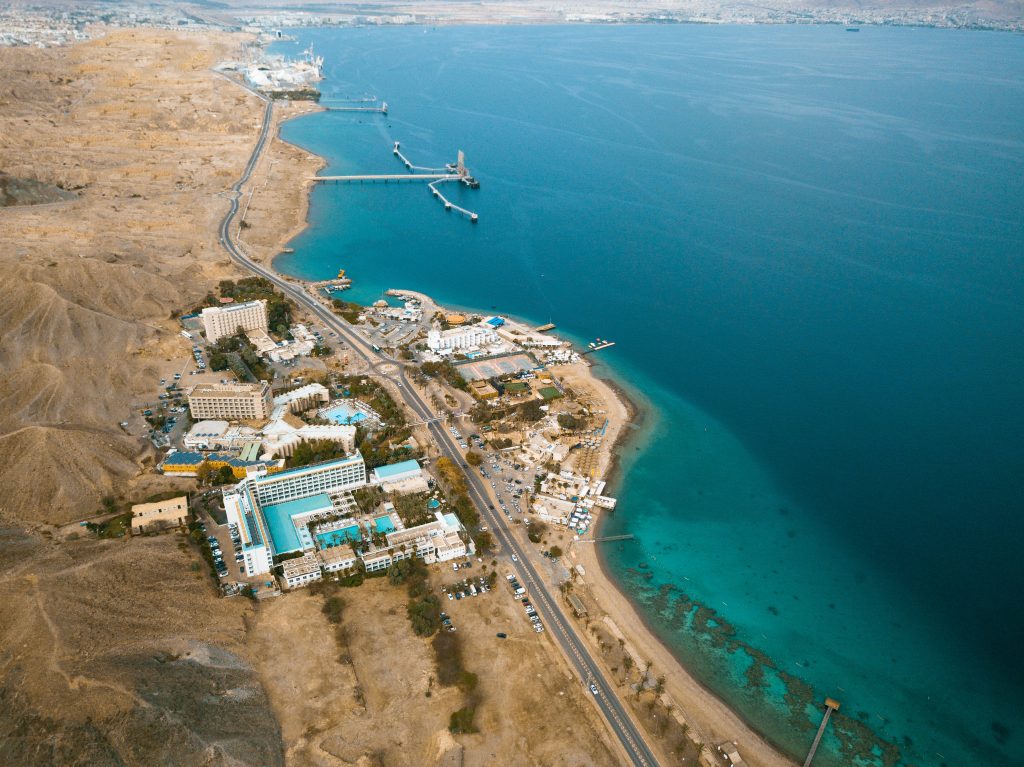Zavit : "Transition énergétique, Israël peut et doit mieux faire"

[:fr]
Israël s’était engagé à fournir 10% de son électricité grâce aux énergies renouvelables d’ici 2020, date fixée dans le cadre de l’Accord de Paris. Un pari ambitieux dont Israël s’éloigne dangereusement aujourd’hui car seuls 5% de l’électricité sont générés par des énergies propres.
Avec ce faible taux de pénétration, Israël se classe parmi les nations les moins performantes, bien que ce pays bénéficie d’un climat très favorable pour la production de solaire et d’un savoir-faire incontestable dans les nouvelles technologies. Un retard difficilement explicable d’autant qu’Israël a toujours été à la recherche de solutions pour pallier son manque de ressources naturelles.
Les innovations dans le traitement et le recyclage des eaux usées comme les techniques de micro-irrigations exportées dans le monde entier, sont des exemples de l’ingéniosité israélienne. L’Etat hébreu fut aussi un pionnier dans l’utilisation de chauffe-eaux solaires. Aujourd’hui quelque 90% des logements en sont équipés ce qui a permis, selon les experts, d’économiser deux millions de barils de pétrole par an. Alors pourquoi cette faible performance dans les énergies renouvelables, un domaine où même des pays moins avancés technologiquement ont fait des progrès remarquables ? Les experts avancent, pêle-mêle, le manque de volonté du gouvernement sur la question de la transition énergétique, la prudence des investisseurs, des problèmes d’infrastructures de réseau électrique et un manque d’incitations financières…
Dans le monde, en moyenne 26% de l’électricité est fournie par les cinq grandes catégories d’énergie renouvelable (solaire, éolienne, hydraulique, la biomasse et la géothermie) avec des répartitions disparates selon les zones. Ainsi en Europe le taux de pénétration de l’énergie verte est de 17%, de 42% en Amérique du sud, de 10% en Chine et aux Etats-Unis. Mais partout dans le monde, la tendance est à la progression et des centaines de milliards de dollars sont actuellement investis dans les grands pays industriels. Renoncer aux énergies fossiles signifie réduire les émissions polluantes. Les scientifiques ont calculé que l’utilisation d’énergie propre a permis d’éviter le rejet dans l’atmosphère de deux gigatonnes de dioxyde de carbone chaque année, un progrès incontestable dans la lutte contre le dérèglement climatique largement dû aux émissions de CO2.
Certes ce n’est pas suffisant comme vient de le rappeler l’ONU lors de la semaine du climat en septembre, mais la prise de conscience vers l’utilisation d’énergie verte progresse.

Les pays qui ont franchi avec succès le pas de la transition énergétique sont l’Islande (près de 100% de leur électricité est propre), le Costa Rica (près de 99%), la Norvège (98%) et l’Uruguay (98%). On aurait pu imaginer qu’Israël, qui profite d’un large ensoleillement, d’un climat chaud et de la technologie adaptée soit plus performant dans ce domaine. Or, ce n’est pas le cas et, même si la part de solaire a progressé depuis 2014 quand elle s’élevait péniblement à 1,5%, la situation est loin d’être satisfaisante.
L’objectif de 10% en 2020 semble hors de portée et le palier de 17% en 2030 sera difficile à tenir, notent les experts qui soulignent qu’sraël devrait s’inspirer de l’exemple de la Californie, en pointe dans ce secteur, qui a su procéder à sa transition énergétique très rapidement grâce à une volonté politique de fer et à ses atouts climatiques.
Aujourd’hui, la cinquième puissance économique mondiale fournit 34% de son électricité grâce aux énergies renouvelables. L’Etat a inscrit cet objectif environnemental dans la loi avec le ”100% Clean Energy Act”, ratifié l’an dernier par le gouverneur. Cette loi fixe un objectif de 100% d’énergie propre en 2045 avec un palier à 50% en 2025 et à 60% d’ici 2030. “La proportion s’élève déjà à 50% dans le seul comté de San Diego”, souligne Scott Anders, expert en climatologie et en énergie renouvelable à l’université de San Diego.
“La Californie regorge d’équipements capables de produire de l’énergie solaire grâce à ses nombreuses fermes photovoltaïques, au développement des panneaux solaires individuels. Il arrive même que l’Etat dispose d’un excès d’énergie renouvelable par rapport à ses besoins. Un succès qui se révèle au-delà de nos espérances quand le processus a été enclenché il y a 20 ans”, poursuit-il. La raison de ce succès ? L’intervention des pouvoirs publics avec les mesures audacieuses prônées notamment par l’ancien gouverneur Arnold Schwarzenegger. L’Etat n’a pas hésité à s’engager dans une vaste politique d’efficacité énergétique comme en témoigne le vote récent de la loi sur la clean energy et d’autres initiatives dont celle qui va contraindre, à partir de 2020, à équiper tous les bâtiments résidentiels de panneaux photovoltaïques.
“S’il n’y avait eu que des initiatives privées sans aide de l’Etat nous ne serions jamais arrivés à ce niveau”, renchérit Scott Anders.
Eilat s’investit dans la transition énergétique
Un message que la ville d’Eilat veut imiter. Élus et entrepreneurs affichent la volonté de faire d’Eilat la ville verte d’Israël et notamment la capitale du solaire profitant de son climat favorable..
Les premiers résultats sont prometteurs avec quelque 75% de l’électricité fournie à Eilat et dans ses environs d’origine solaire, grâce aux neuf fermes solaires et à des centaines de panneaux installés sur les toits de maisons individuelles et de bâtiments publics. D’autres projets ambitieux de fermes photovoltaïques sont en construction à l’aéroport Ramon et dans le parc naturel de Timna pour que cette cité balnéaire et ses environs puissent être alimentés uniquement en énergie solaire dans les prochaines années.
“Si Eilat fait preuve d’un dynamisme dans ce domaine ce n’est malheureusement pas le cas dans le reste du pays où 95% de l’électricité provient encore des sources fossiles (gaz naturel et charbon)”, regrette Shahar Dolev, responsable de la recherche au forum israélien de l’énergie. Ce sont des arguments financiers qui freinent le développement de l’énergie verte dans tout le pays souligne-t-il. “Entrepreneurs et élus veulent étudier comment se déroulent les expériences solaires ailleurs dans le monde, évaluer les résultats financiers et l’efficacité de ces nouvelles sources énergétiques, avant d’investir massivement”, explique Shahar Dolev.
A l’argument financier, il rétorque : “La guerre contre le dérèglement climatique est coûteuse mais la question est de savoir quelles sont les alternatives. Si nous ne basculons pas vers les énergies propres les coûts et les risques seront beaucoup plus élevés pour les générations suivantes“, plaide-t-il.
Très prochainement le solaire deviendra compétitif et même moins cher pour le consommateur que les énergies conventionnelles grâce à la forte baisse du prix des équipements et des installations, fait remarquer Shahar Dolev. “La compagnie nationale d’électricité en Israël est d’ailleurs en train de revoir toute sa politique», souligne-t-il.
Si dans le sud du pays l’énergie solaire est plus développée que dans le reste du pays c’est également du fait des superficies vierges disponibles. Il faut d’importantes surfaces pour installer des fermes photovoltaïques. Dans le nord du pays les possibilités sont limitées. Israël est un petit pays et “nous avons peu de terres vierges. Dans le nord les grandes surfaces sont occupées par les camps d’entraînement de l’armée, par des réserves naturelles ou des exploitations agricoles”, indique Shahar Dolev.
Une infrastructure peu adaptée
L’infrastructure du réseau électrique est aussi un frein au développement du solaire, car il n’est pas conçu pour transporter suffisamment d’énergie solaire du sud d’où elle est majoritairement produite, vers le nord, plus peuplé. «L’infrastructure a été construite selon l’idée que le sud du pays est moins peuplé que le nord et donc le réseau y est moins dense”, explique Shahar Dolev. “Conscient de ce décalage la compagnie publique est en train de rééquilibrer le système électrique mais cela prendra de nombreuses années avant qu’il ne soit opérationnel”. En attendant, la seule solution est de développer le réseau de panneaux solaires individuels au nord. Le gouvernement et l’autorité en charge de l’électricité viennent de lancer une vaste campagne d’information pour inciter les particuliers à investir dans des panneaux solaires sur leur toit.
“Chaque bâtiment public devrait être prêt à accueillir un panneau solaire. Son installation au moment de la construction d’un bâtiment est peu chère et leur pose doit être encouragée partout“, indique Shahar Dolev.
Une autre façon de développer l’énergie solaire serait d’investir dans des systèmes qui permettent de la stocker à court et long terme pour être utilisée la nuit et en hiver. Cette technologie d’avant garde est toutefois coûteuse pour le moment mais les prix devraient baisser progressivement.
En attendant les Israéliens devront, pour participer à la lutte contre le réchauffement climatique et réduire les émissions de gaz à effet de serre, continuer à économiser l’énergie de manière classique en éteignant leur lumière, limiter l’usage de la climatisation…
Le ministre de l’Énergie Yuval Steinitz reste optimiste et a encore récemment souligné que Israël arrivera, en collaboration avec l’Autorité de l’électricité, à atteindre son objectif de 10% d’énergie verte produite en 2020”. Une affirmation qui pourra être vérifiée… ou non, très prochainement.
En attendant Israël n’a pas grand-chose à envier à la France qui a aussi pris du retard par rapport aux autres pays européens notamment. En France, l’énergie renouvelable ne représente que 20% de la production d’électricité. Le bilan du solaire est modeste avec moins de 2% contre 5,5% pour l’éolien et 11,2% pour l’hydroélectricité. La France est loin derrière l’Allemagne, qui produit aujourd’hui près de cinq fois plus d’électricité solaire et même que la Grande-Bretagne dont la météo est pourtant peu favorable.
Auteur : Racheli Wacks pour ZAVIT – Agence de presse israélienne pour la science et l’environnement 29 novembre 2019
https://www.youtube.com/watch?v=H86x9vlVW6I&feature=emb_logo[:en]
According to Israel’s energy commitments, ten percent of its electricity will be supplied by renewable energy sources in 2020. How close is Israel to meeting this goal, and how does it match up with other nations in the world?
2020 is approaching quickly, and according to Israel’s targets following the Paris Agreement, 10 percent of the country’s electricity will be generated from renewable sources instead of fossil fuels by next year. However, 2020 will commence before Israel has cleared the 10 percent hurdle. At the same time, other nations have reached their energy goals some time ago and are already producing over ten percent of their electricity through renewable energies.
Worldwide, electricity generated from renewable sources is steadily increasing. According to a new report by the United Nations and the Frankfurt School of Economics and Management, global renewable energy production has quadrupled in the last decade.
Today, renewable energy accounts for 26 percent of the world’s electricity production. This prevents two gigatons more of carbon dioxide from entering the atmosphere per year, which immensely helps in the fight against climate change. Among the world’s leading renewable energy producers are Iceland (close to 100 percent), Costa Rica (almost 99 percent), Norway (98 percent), and Uruguay (98 percent).
Lots of sun, too little solar
In a country as hot and sunny as Israel, one might expect widespread use of solar energy, but unfortunately, that is not the case. In 2014, electricity production from renewable energy in Israel was supposed to be at five percent. However, only one-half percent of the country’s energy came from renewable sources. While the situation has improved slightly since then, it is still far from satisfactory. The target for 2030 is to generate at least 17 percent of all electricity from renewable sources.
A more optimistic example of investing in renewable energy comes from California, whose economy is among the largest in the United States and the fifth-largest in the world. California generates 34 percent of its electricity from renewable sources.
“In San Diego County and the surrounding area, nearly 50 percent of the energy is renewable,” says Scott Anders, director of the University of San Diego’s Energy and Policy Initiatives Center. By California law, the goal is to reach 60 percent by 2030 and 100 percent by 2045.
“California’s main renewable source is solar energy. We have so much of it, due to large solar farms and rooftop panels, that at certain times of the year we have too much renewable energy and we need to get rid of it. The situation here is impressive. If asked 20 years ago, I would not have said that we would get that far today,” says Anders.
Anders says that the scope of renewable energy in California has increased primarily thanks to policy measures, especially those taken by former state governor Arnold Schwarzenegger. “It wouldn’t happen because of market forces alone,” he adds.

The good news
Despite the rather sobering numbers, Israel did register some successes in its strive to produce green energy. Seventy-five percent of the electricity consumed in and around Eilat, a coastal city located at the southern end of the Arava desert in Israel, is currently produced from solar energy. This was achieved through nine individual solar fields in Eilat and the Arava and hundreds of solar roofs in public institutions and private homes. In addition, another field is currently being built at Ramon Airport and Timna.
According to the municipality of Eilat, the ultimate goal is to have the city’s electricity supply come from 100 percent solar energy.
However, as mentioned before, the vast majority of electricity in Israel is still produced from fossil fuels, most notably natural gas and coal. According to Dr. Shahar Dolev, research director of the Israeli Energy Forum, the main reason is, unsurprisingly, money-driven. “The perception among decision-makers in Israel is that as a small country, it is better to wait and let other nations invest money and lay down the groundwork for these technologies so that costs drop enough and efficiency increases. Then, we will invest our money.”
Other countries, however, have already invested hundreds of billions of dollars in renewable energies. According to the UN report, in the last decade, China has put $758 billion in renewables, closely followed by the EU with $698 billion. The US and Japan have invested large sums with $356 billion and $202 billion, respectively.
Andres explains that the widespread financial investment in solar energy in California is costly. “San Diego electricity prices are among the highest in the US,” he says. “The war on climate change costs money, but the question is, what’s the alternative? If we do not switch to renewable energy, it will have a price, and it could be much higher. For the future of the state of California, for everyone, we must apply these policies.”
The good news is that the cost of solar energy is much lower today than before. “Prices are plummeting at an unprecedented rate,” says Dolev. “We have arrived at a point where installing a solar panel is cheaper than receiving electricity from a power plant that runs on fossil fuels. Accordingly, over the past two years, we have seen a substantial change in the Israel Electric Authority’s approach to the issue.”

Panels on every roof
A lot of space is needed to build solar farms. These generate electricity at a significantly lower price for consumers than electricity produced by panels on the roofs of private houses (0.09 Israeli shekels per kWh versus 0.48 shekels per kWh, due to the size advantage of the farms). In a country as small as Israel, however, vacant land is hard to come by. “We don’t have unused areas,” says Dolev. “The vast areas we have already function as IDF training areas, nature reserves, or farmland,” he adds.
Another problem arises from the fact that most of the solar fields are located in the Negev Desert and the Arava Valley, in the very south of Israel. Therefore, it is necessary to transfer most of the electricity produced northward to the more densely populated areas of the country. “The national electricity grid was built on the assumption that relatively few people will live in the Negev region,” explains Dolev. “All of a sudden, astronomical amounts of electricity are being generated in the Negev. The transmission system is not built for that,” he stresses.
The transmission network is currently undergoing an upgrade to address this problem, but it will take several more years until it is completed. “It costs a lot of money and takes a long time, and until then, there will be a ‘traffic jam’ from the exit of the Negev to the north,” says Dolev.
In order to increase the use of solar energy in Israel, despite the transmission issues and higher costs, the Israeli Energy Forum supports a plan to place as many solar panels on as many rooftops as possible, according to Dolev.
“Beyond that, every new building should include solar panels, or at least panel preparation on the roofs and also on the walls. Panel installation during construction is as inexpensive as a panel installation of the same size in a solar farm. In addition, solar panels should be installed on any available space, including parking lots, roofs, landfills, etc.,” emphasizes Dolev.
Another way to increase the use of solar energy is to invest in systems that will store the energy for both short and long term use, allowing it to be used at night and during the winter. Cutting-edge technology for these systems is still very expensive and not yet available for commercial use; however, their prices are dropping.
Until that happens, Israel’s residents will have to stick to the traditional ways of reducing greenhouse gas emissions by simply saving electricity. “There are simple steps to take, such as adjusting the air conditioner to the recommended temperature according to the season or turning off the lights and air conditioning when leaving the room,” concludes Dolev.
The Ministry of Energy said in response, “the Ministry of Energy is promoting the generation of electricity from renewable energy, as part of the government’s decision to reduce coal use in accordance with the state’s commitment in the Paris agreement.
“According to the plan from the Ministry of Energy and in cooperation with the Electricity Authority, Israel is expected to meet an intermediate target of 10 percent renewable energy production by 2020.”
Racheli Wacks for ZAVIT article was also published in The Jerusalem Post on 11/10/2019
[:]







